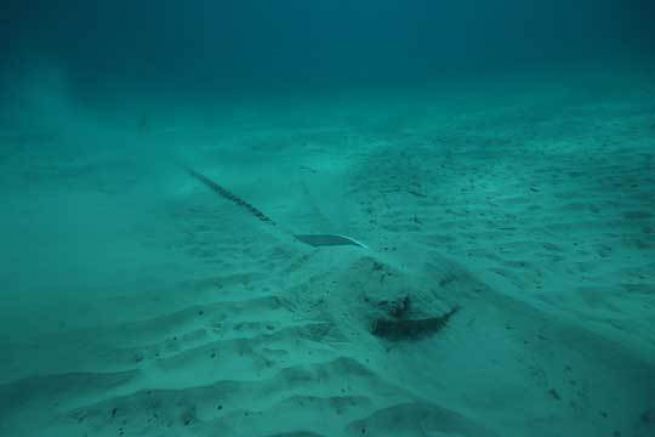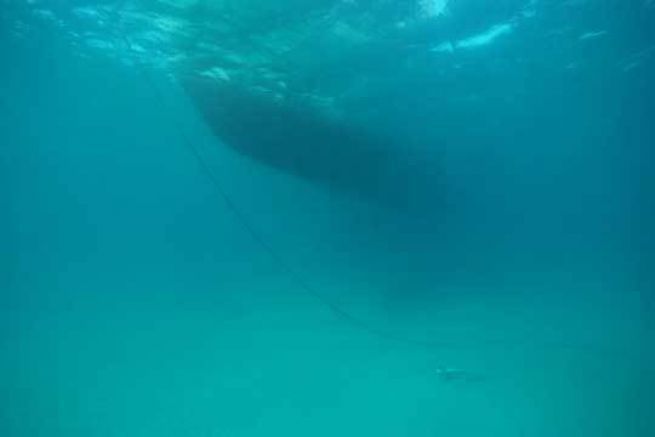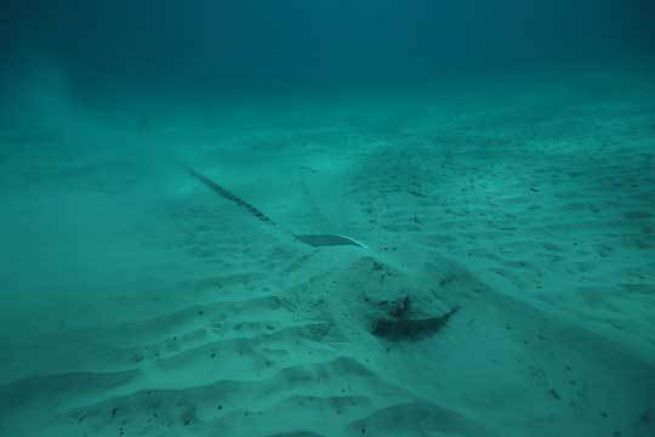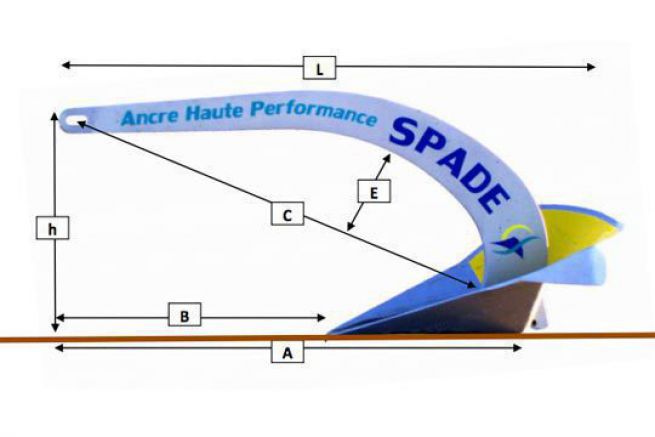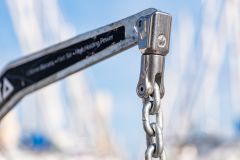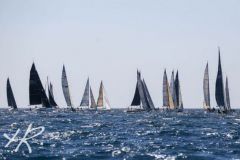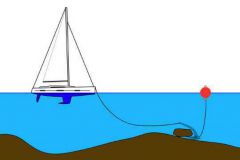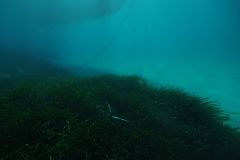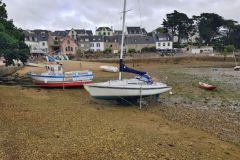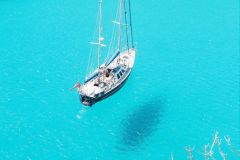Grapple
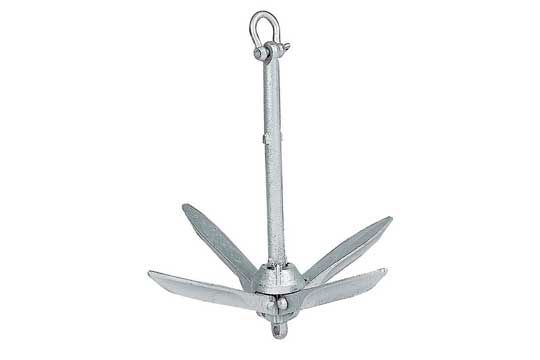
It is the anchor for small units, or for anchorages in good weather. Models with steel rods are designed to bend if the anchor gets stuck in the rocks. Fishermen love it. Foldable grapples are often used on tenders because they can be stored in the closed position. This anchor holds better on rocks than in sand, because its shovels have very little surface area.
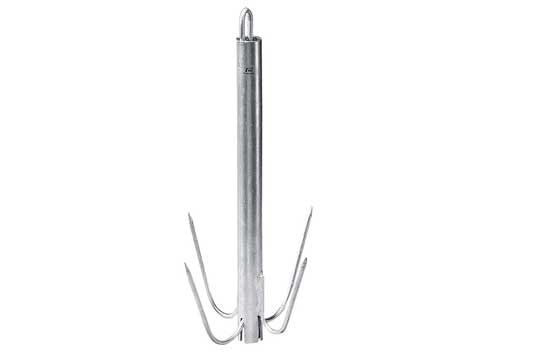
| Shape | Cross with 4 folding or unfolding branches |
| Usage | Anchoring in good weather while staying on board, for small boats or even tenders |
| Behaviour | Gets stuck in rocks (sometimes difficult to climb up), doesn't hold in the sand |
Flat anchor
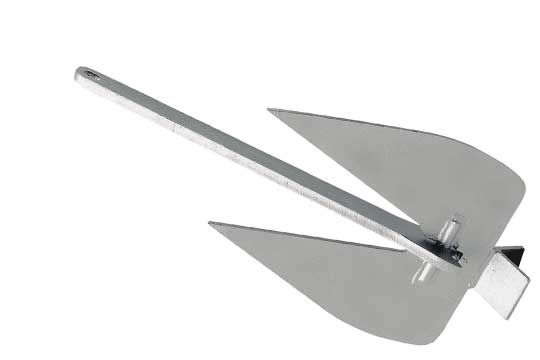
Many brands (Fortress, FOB, Britany, Danforth...) offer this model, which is undoubtedly the most popular on recreational boats. With their articulated rod, they can be placed on either side. In practice, this type of anchor only works on a shovel, because when pulled, the anchor is placed on its side (with a shovel above the ground). While its resistance to sand is sufficient, this anchor is not suitable for smooth rocks or algae.

| Shape | Two shovels on each side of the articulated rod. Sometimes a jas to help stabilize the anchor. |
| Usage | Multi-purpose and very present on our boats |
| Behaviour under traction | Sits on his side on a shovel, stalls and has trouble replanting |
Ploughshare anchor
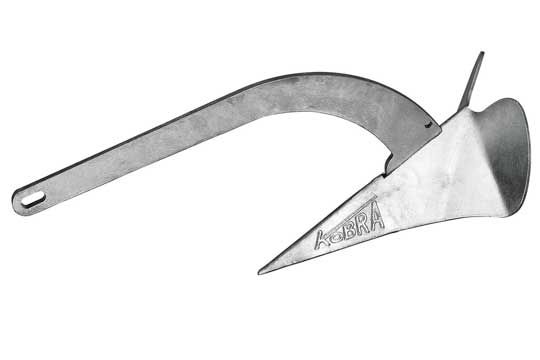
To design this anchor, the design offices were inspired by the plough that ploughs the fields. By its balance, the anchor plants its point in the bottom and ploughs the ground under traction. There are models with the articulated rod (CQR) or others with the fixed rod (Kobra, DC Anchor).
| Shape | Plough coulter with rod above (articulated or not) |
| Usage | Any type of bottom with a preference for sand |
| Behaviour under traction | Ploughs the ground without stalling, slips slowly but evenly |
Ballasted spoon anchor (or concave shovel)
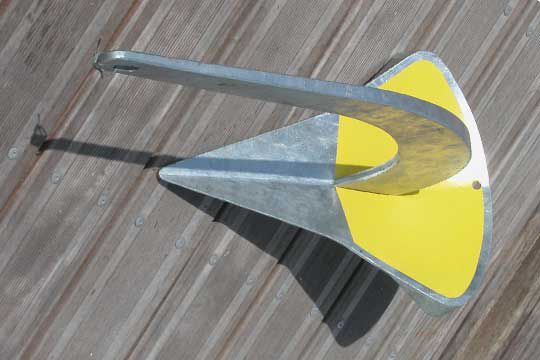
These are spoon-shaped anchors with a weighted tip (with lead). Under traction, these anchors sink deeper and deeper. These are currently the most efficient models (with the best performance). These models can be found in the Spade range and at Ultra Marine.
| Shape | Spoon with pointed tip |
| Usage | For those who want a 4x4 anchor |
| Behaviour under traction | Sink to the point of disappearing completely |
Bruce Anchor
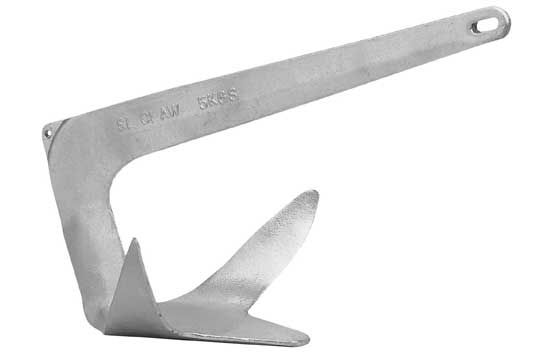
This often copied anchor shape is a concave shape, but with 3 unweighted shovels. It is found on many foreign forceps. If these anchors fail well, they always end up stalling quickly, but fortunately they also hang up quickly.
| Shape | Hydride between spoon and legs |
| Usage | Often on sailboat forceps |
| Behaviour | It crashes and stalls so quickly... |

 /
/ 